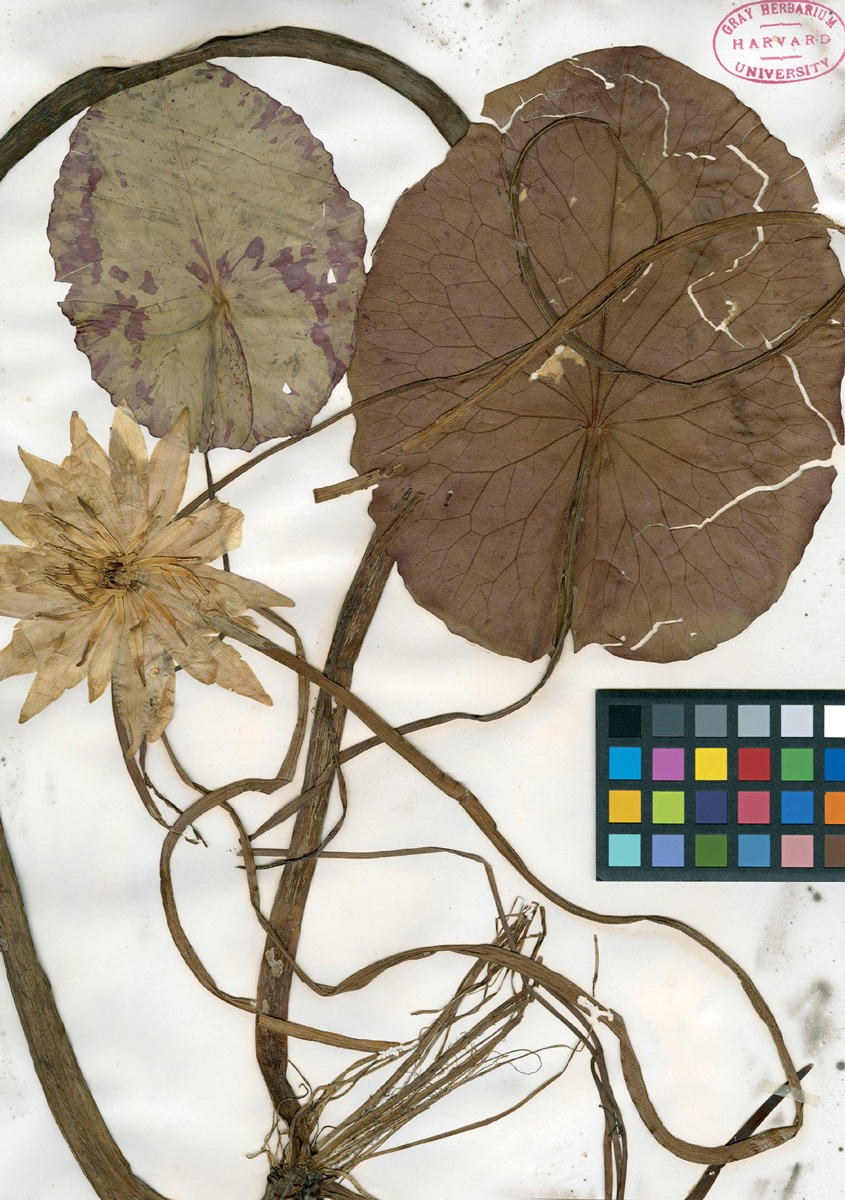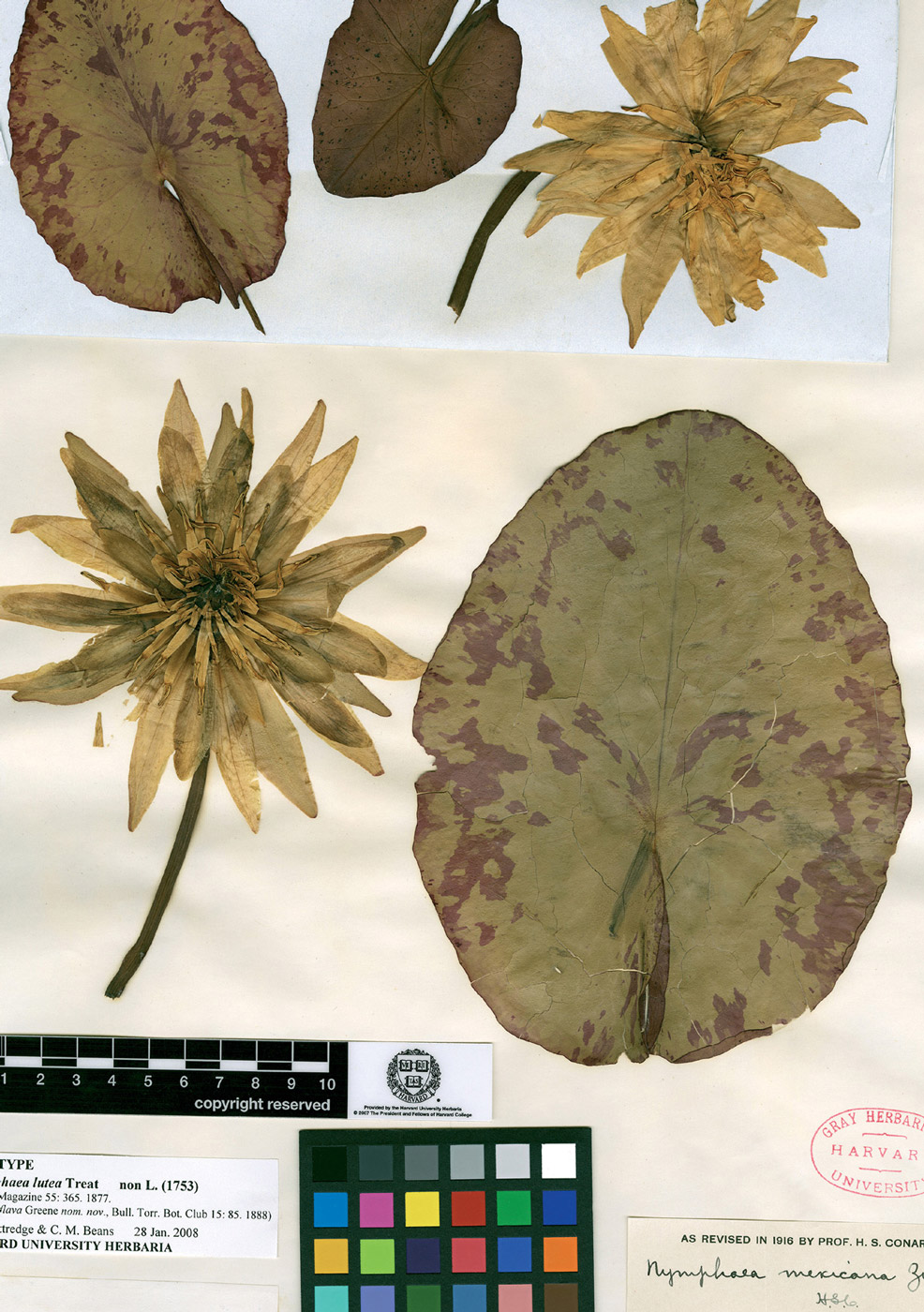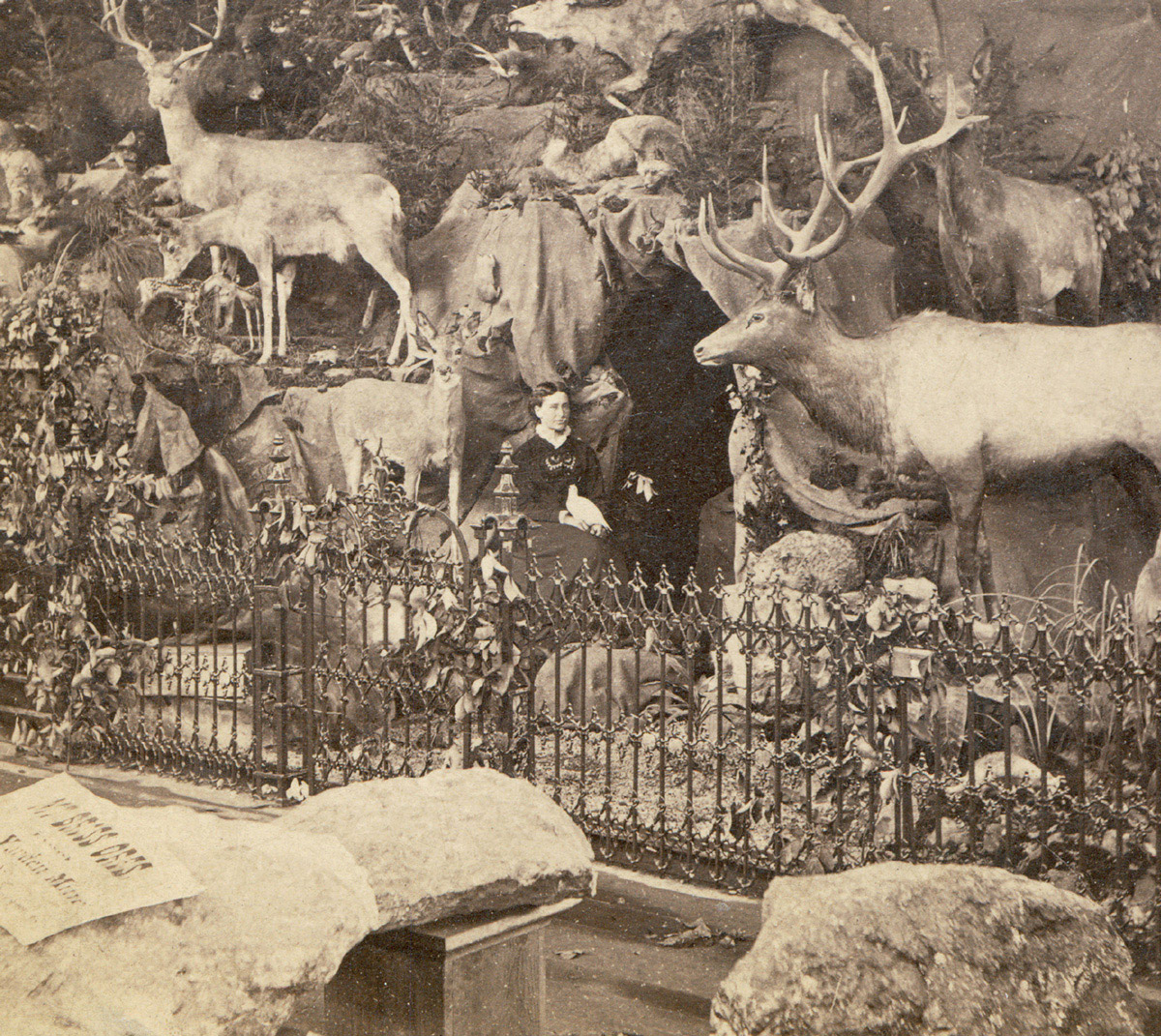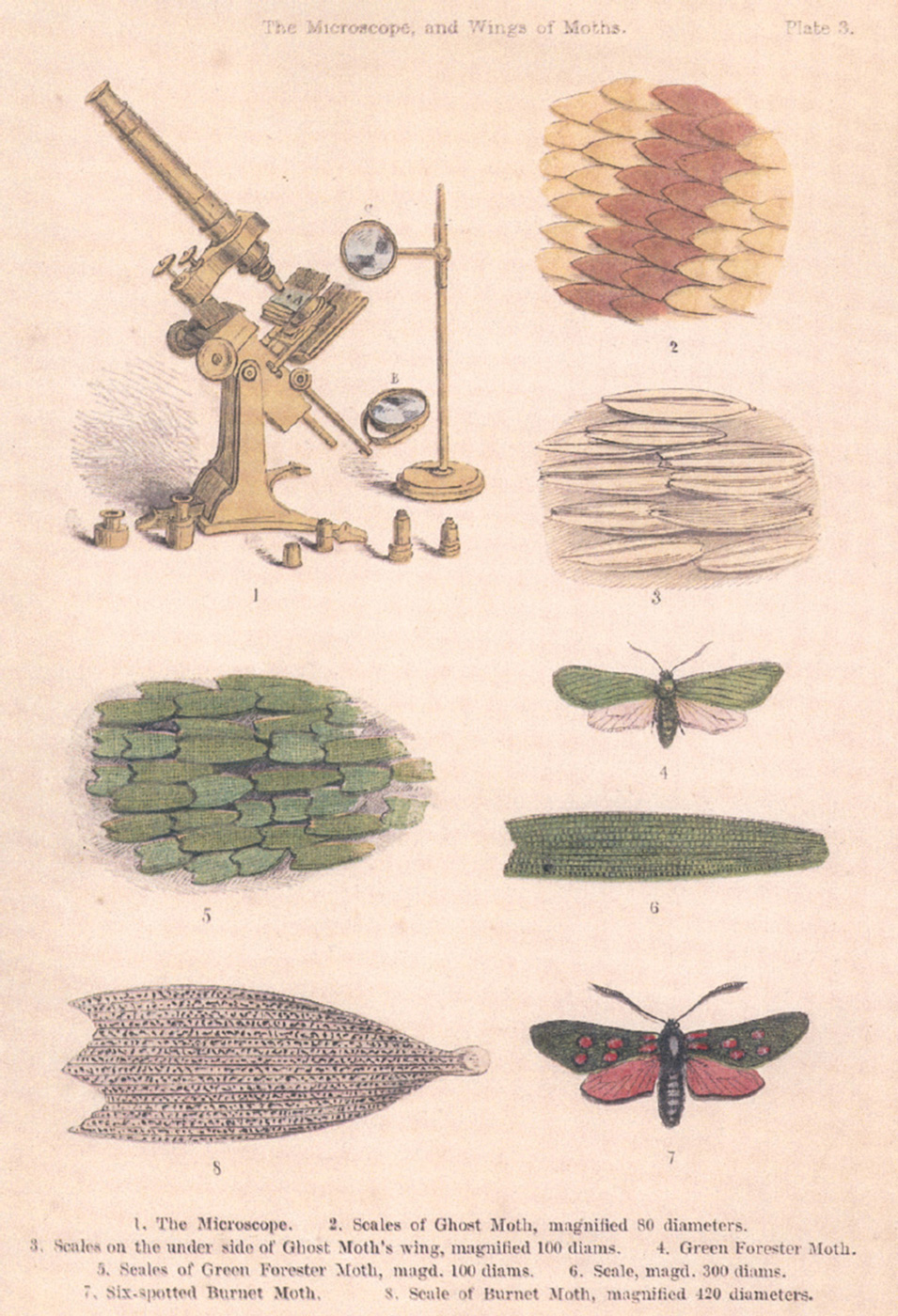Reversing the Regular Order of Nature: An Interview with Emilie Clark
Mary Ward, Mary Treat, Martha Maxwell, and the place of the female naturalist in nineteenth-century science
Frances Richard and Emilie Clark

Like their male counterparts, the nineteenth-century natural historians Mary Ward (1827–1869), Mary Treat (1830–1923), and Martha Maxwell (1831–1881) were dedicated to observation and experiment, amassing collections, corresponding with leading thinkers such as Charles Darwin and Asa Gray, and presenting discoveries via publications and exhibitions. Yet they have been largely elided in the history of science. Since 2003, artist Emilie Clark has been working with their little-known archives. Frances Richard spoke with Clark regarding her findings.
Cabinet: So, who were these women?
Emilie Clark: Mary Ward, Mary Treat, and Martha Maxwell have a few remarkable things in common. They were dedicated to the experimental method. Treat and Maxwell identified new subspecies, and Ward and Treat published voluminously. They all collected with the special zeal of the nineteenth-century naturalist. And all three had to deal with their oxymoronic status as women scientists. There’s been almost no scholarship about any of them. Besides that, they’re pretty disparate. Ward was Anglo-Irish. Her cousin William Parsons built the world’s largest reflecting telescope in the 1840s, and was president of the Royal Society in London, which gave Ward an entrée to eminent physicists, astronomers, and entomologists. She worked as an illustrator of scientific publications, and received communications from the Royal Astronomical Society—very rare for a woman in her day. She also wrote a best-seller, A World of Wonders Revealed by the Microscope (1858), which was reprinted eight times before 1880.
Mary Treat and her husband moved in 1869 to the utopian settlement at Vineland, New Jersey. Vineland was founded by Charles Kline Landis to be an agricultural paradise. No fences; no liquor; salaries doubled for workers. Landis was a nut, however—in 1875 he shot a reporter for the Vineland Independent and was acquitted of murder by reason of insanity. But Treat lived there for decades. She researched control of farming pests and helped pioneer the study of carnivorous plants; she wrote five books and over a hundred articles, and corresponded with Darwin and Gray. Her discoveries include an amaryllis, Zephyranthes atamasco var. treatiae; a harvester ant, Aphenogaster treatiae, and a burrowing spider, Tarantula turricula.
Then there’s Martha Maxwell. She also spent time in Vineland in the 1860s. Then she and her husband moved to Colorado where he prospected for gold, and she taught herself taxidermy. She identified a screech owl, Scops asio var. maxwelliae, and corresponded with officials at the Smithsonian Institution, but her major achievement was being invited to represent Colorado at the 1876 Centennial Exhibition in Philadelphia. She constructed a grotto complete with a running stream, growing plants, 100 specimens of stuffed mammals, and 400 stuffed birds. The press celebrated her as the “Colorado huntress.” But she was basically penniless, and lived for the duration of the fair in the faux cave inside her own exhibit. The title of the show was “Woman’s Work.”
What kind of sources have you studied in your research?
The Vineland Historical Society has Treat’s papers stuffed in manila envelopes. Some biographical information is dropped into the books she wrote, which include Injurious Insects of the Farm and Field (1882) and Home Studies in Nature (1885), and there’s a fifty-page booklet by a New Jersey biology professor. Most of what we know about Ward comes from her own writing as well. There’s a young-adult biography about Maxwell, and she wrote a book with her sister, called On the Plains and Among the Peaks, or How Mrs. Maxwell Made Her Natural History Collection (1879).
How would you describe their careers?
I think of Ward, especially, as being a science writer before that role existed. She wrote for the schoolroom. Treat was more scholarly; she published not only in popular magazines like Harper’s Monthly, but in the American Naturalist and the Journal of the New York Entomological Society. The Historical Society has all these postcards from Gray at Harvard, with one sentence about something he’s found in a plant they’re both studying, or one scribbled question for her to follow up. She corrected Darwin as he was working on Insectivorous Plants (1875). But that was, of course, just one of his many books. Gray worked on botany at large. Insectivorous species were almost all Treat did.
There’s that cliché about women’s work being local and diminutive. And yet, Maxwell worked on a big canvas—500 specimens installed for a year at the Centennial.
Maxwell is the weirdest of the three. She mixes legitimate science with sideshow attractions. She was a homesteader, and probably the first white woman to shoot a buffalo; she corresponded with Robert Ridgway, who was the first ornithologist at the Smithsonian, and with Elliot Coues, who wrote the Key to North American Birds (1872). They catalogued her birds and mammals, respectively, and appended their notes to On the Plains and Among the Peaks. But she also ran a storefront museum, and peddled souvenir photographs of her Philadelphia exhibit, getting into trouble because she sold about 5,000 of them without permission from Centennial authorities.
Maxwell’s personal life also seems to have been most disrupted by her work. Of course, the work was disgusting. There’s a passage in On the Plains and Among the Peaks about how she would pause in preparing her mounts to retch. Her daughter Mabel wrote a book I haven’t yet gotten my hands on—the only known copy is at the Colorado Historical Society—but from what I can glean, she indicts her mother for being selfish and obsessive. Mabel apparently led a very conventional adult life, in spite (or because) of having spent her childhood on a wagon in the mountains, while her mom was pretending she was a dog and tracking animals and shooting them.
Pretending she was a dog?
When she was collecting waterbirds, she observed how the dog would hide in the reeds and pounce. So she practiced, and that’s how she got her specimens.

It’s interesting that Maxwell was the one who struggled most financially, yet seems to have had the most formal education. Were Treat and Ward educated at home?
Maxwell attended Oberlin while she could afford it. In the early 1860s, she studied taxidermy at Baraboo Collegiate Institute in Wisconsin, and mounted birds for the school’s new department of zoology. Then she married a man twenty years her senior. She took care of his children, and they had their daughter. They moved to Vineland, then to Colorado. In 1878 Maxwell went to Boston to enroll in the Woman’s Laboratory of the Massachusetts Institute of Technology. She took art classes, too, because she believed that drawing was often the best way to convey her observations. She thought of her taxidermy and tableaux as merging scientific accuracy with artistic expression—not her personal expression, but expression of the living animal in the wild.
Treat went to a private girls’ academy, and that’s about all we know of her education. Her father was a Methodist minister from upstate New York, and her husband was a doctor interested in progressive issues like abolitionism, women’s rights, and atheism. Even so, they separated soon after they got to Vineland. She owned the Vineland house, and she speaks of herself, somewhat jokingly, as “hermit-like.”
Ward was encouraged to explore science. There’s a story about the astronomer Sir James South noticing her studying with a magnifying glass, and telling her father that he must buy her a microscope. She was trained to draw, as women of the period were if they had any polite education. She corresponded with Sir David Brewster, who invented the kaleidoscope. But as far as I can tell, she entered into her professional contacts with a practical or illustrational—but not creative—interest in science. Natural history was becoming an industry; it was pre-photography; accurate imagery was needed. Ward had eight children, and she must have been responsible for managing the household. She had to publish Sketches with a Microscope privately, because no one wanted to take a risk on a woman’s scientific writings. But Sketches was reprinted the next year as A World of Wonders Revealed by the Microscope: A Book for Young Students. It sold well for twenty years. She also wrote a book called Telescope Teachings (1859), so she worked with specialists’ instrumentation at micro and macro levels.
Of the three, Ward is most concerned with maintaining femininity. A World of Wonders is an epistolary manual aimed toward girls, so perhaps it had to be particularly proper. There’s a conclusion all about God; she remarks that looking through the microscope “is like seeing a faint glimpse of the meaning of ‘Infinite Power.’” The book is structured around fifty-four items from Ward’s collection that she examines microscopically—things like a codfish’s eye, which she enthusiastically peels, or the hair of a mouse. The descriptions are exact, but they compare the specimens to domestic things like buttons and ribbons and lace.
This was 1858—truly Victorian in terms of what was acceptable for a well-bred lady, and also a period in which intellectuals were struggling to reconcile scientific data with faith.
Yes. Darwin was about to publish The Origin of Species (1859); there was huge controversy regarding evolution, and even people like Gray had terrible conflicts about accepting the theory. Still, Gray was so persuaded that he became the voice of Darwinism in the US, against his Harvard colleague Louis Agassiz, who championed creationist ideas in the teeth of geological evidence. Treat was commissioned by the Brooklyn Ethical Association to write an obituary tribute to Gray, by the way. They wanted her to explain how he had dealt with religion and evolution, which she did. It was eventually published, but someone else—a man—read the speech at the Association’s memorial. Ward was in a similar situation in that societies for natural research and botanical gardens like Kew that hosted paper-giving excluded women.
Treat circumvented this by going her own way. As far as we know, she never even met Gray. She traveled every year to Florida to study a certain set of carnivorous plants, and to the New Jersey Pine Barrens. She had her own menagerie of carnivorous plants in Vineland.
What did Treat discover about the Venus flytrap?
Across the board with carnivorous species, she discovered that multiple functions cause the insect to die inside the plant. She corrects Darwin on the bladderwort (Utricularia clandestina). He believed that insects “enter merely by forcing their way through the slit-like orifice, their heads serving as a wedge.” Treat argues instead that a sensitive valve sucks them into the bladder. Darwin writes in a letter of 1 June 1875, “I have read your article with the greatest interest. It certainly appears from your excellent observations that the valve was sensitive. … It is pretty clear I am quite wrong about the head acting like a wedge. The indraught of the living larva is astonishing.” He credits her by name in Insectivorous Plants.
She corresponded with Darwin on several other species as well, including the sundews and the Venus flytrap. Darwin wanted Treat to clarify if the flytrap could capture and digest more than one insect at a time. He knows it’s the insect touching the leaf that causes trigger hairs to close the lobes. (The trigger hairs are different from the toothed cilia you picture; the triggers are isolated hairs that must be touched at least twice before the trap shuts.) He thinks the prey is suffocated. But, in fact, when the leaves close, an enzyme is released that intoxicates the insect and helps break down its body. It’s the same in pitcher plants, the Sarracenia. Darwin thought the insects would be attracted by the plants’ scent, crawl inside, just fall to the bottom, and die. But, again, an enzyme anesthetizes and breaks them down. Treat figured this out via very direct means—sticking her finger in a flytrap and letting it go numb, tasting the pitcher plant’s nectar, and so forth.
She theorizes that the secretions are aphrodisiacs. The insects fly in, realize they’re trapped, and may try to fly out, then come back for more. They’re greedy—or they’re tricked. Pitcher plants have a hood with translucent patterning, and Treat observes that these function like skylights. Prey tries to escape through these “windows,” and is batted back. The deceptive hood propels it to its death. She uses language like that. She doesn’t mention God, but she’s alert to the issue of violence. This is in 1885:
For several years past I have devoted much time to a class of plants that seem to have reversed the regular order of nature and, like avengers of their kingdom, have turned upon animals, incarcerating and finally killing them. Whether the plants are really hungry and entrap the animals for food, or whether it is only an example of the wanton destructiveness of nature I leave the reader to judge.

Even plants are red in tooth and claw. But from Darwin we learn that competitive survival is the order of nature. Thinking about killing and “unnatural” order, it’s hard not to wonder about the Venus flytrap, the interspecies predator, being characterized as feminine. Where does that name come from?
The plant is native to the Carolinas; its Latin name is Dionaea muscipula. Here’s what Donald Schnell says in Carnivorous Plants of the United States and Canada (2002):
Arthur Dobbs brought it to attention in 1763 calling it the “Fly Trap Sensitive” and specimens were sent to England where it was “suspected of being carnivorous.” Linnaeus was unconvinced and gave it its current name after Diana, Greek goddess of love and beauty. … The most unusual common name known for it in the 18th century was tipitiwitchet. This had been attributed to the Native Americans, but there is no such term in any Native American language then or now. The name was a European vernacular term for female genitalia. Some speculate that botanists sought to make reference to the genitalia in a proper way by choosing Diana. Muscipula was supposed to mean flytrap, but the Latin is wrong and actually translates as mousetrap—so, Aphrodite’s mousetrap!
Schnell sounds a bit confused about the goddesses. Diana/Artemis is the huntress, the moon goddess associated with untamed virginity; Venus/Aphrodite is the goddess of beauty and sexual love. But I suppose it’s an instructive mix-up—the plant is both virgin and whore. Deceptive, sexual, flesh-eating—it’s basically a vagina dentata, right? It’s graphic. Pornographic.
Exactly. It has beautiful little flowers, and big teeth. Treat remarks on this combination of violence with beauty. These plants have evolved in very poor conditions to survive through a predatory act. One of her experiments asks, if you give a carnivorous plant more nutrient-rich soil, how does it react? It dies. Most people who try to grow carnivorous plants kill them, because they do everything you would do for a house plant.
They kill them with kindness. It’s interesting that this experimentation with natural economies should coincide with the utopian experiment of Vineland.
The Vinelanders were Theosophists, feminists, vegetarians. I haven’t been able to prove it, but I’m convinced that Treat and Maxwell must have known each other, or at least known of each other. They were two scientific women in a small, freethinking community. Charles Landis wanted to “set down a perfect social and political society to fit the natural conditions.” And for a time it seems to have worked. Edward Everett Hale, the Unitarian minister, said, “Vineland is the only new place I ever visited where I have found the greater part of the women satisfied.”
Was Vineland considered scandalous? Were Treat and Maxwell less concerned with religious decorum than Ward?
They make the obligatory references, but it’s not clear how passionate they are about pious feminine obedience. Maybe Treat just wanted to work in peace, and Vineland allowed that. She slips remarks into Home Studies in Nature about how clever, industrious, etc. the females of this or that species are compared to the males. Maxwell was committed to various social issues—temperance, women’s rights. There are some quite feisty passages in On the Plains and Among the Peaks, where Mary Dartt—Martha’s sister—holds forth about equality. For Maxwell, Oberlin would have been another pocket of freedom. It was one of very few co-ed institutions, and women weren’t expected to take second choice for their courses, although their time was encumbered by washing and cooking for the men.

So Ward was comfortably well-off, and Treat was self-supporting. Maxwell seems to have been always scrabbling for money.
She was destitute. She earned something selling specimens to the Smithsonian—not taxidermy, but, say, eggs she collected. She stuffed trophies. She set up her Rocky Mountain Museum in a storefront and charged an entrance fee of twenty-five cents, which was not dirt cheap. Along with her taxidermied Colorado fauna, she showed mineral samples and curios like a suit of Japanese armor. Originally she established the museum in Boulder, but it didn’t bring in enough cash, so she moved to Denver, where there was more traffic. But it still failed.
Periodically Maxwell would convince her husband to be part of her schemes; at one point he agreed to rent their house and live in the museum to save money. At the Centennial Exhibition, she worked in the cafeteria and slept inside her cave for over a year. It was “woman’s work,” and there was the woman herself, right before your eyes. She was making a conscious statement about female gumption and capabilities. Here’s the opening passage of On the Plains and Among the Peaks:
“Woman’s work! What does that mean? Can it be possible any one wishes us to believe a woman did all this?”
“Couldn’t say—I’m pretty sure I shan’t stretch my credulity so much—it would ruin the article!”
“I should think so! Why one might think the ark had just landed here!—buffaloes, bears, birds, wild-cats, mice, and who but Noah or Agassiz could name what else! There must be hundreds of these creatures!” and the last speaker turned to me with the question:
“Does that placard really mean to tell us a woman mounted all those animals?” with an inclusive wave of a handsomely gloved hand.
“Yes,” I replied.
She becomes one of her own specimens.
And there’s the heartbreaking fact that she can’t get any respectable scientific institution to house her collection. She’s devoted to its preservation, and she can’t relax until she knows it will have a permanent home. It never does, and eventually the specimens are destroyed by parasites and the elements.
Is that because she made a mistake? Or is that just what happens to taxidermy after a while—or to taxidermy from that era?
It’s what happens, especially when the specimens are not cared for. Maxwell actually improved on contemporary methods. She was careful to observe the living animal. She took precise field measurements, and built up the forms with plaster. Before that, taxidermists would use wads of stuffing. Maxwell’s specimens suffered partly because she had to drag them all over. The last move she made was to Far Rockaway, where she got someone to back her in opening a Coney Island–type resort, with Colorado creatures on display by the Atlantic. It was, of course, a complete failure. She wanted the work to go to the Smithsonian, but that never happened. After her death, Mary Dartt tried to get Yale to take it for the new Peabody Museum, but they refused to pay the asking price.
Didn’t these institutions believe in it as a project?
Elliot Coues, at the Smithsonian, wrote that such groupings were inappropriate for scientific instruction and that he preferred taxonomic arrays of specimens, organized by size. This probably explains why the Smithsonian didn’t want her exhibit, although Coues respected her work. Maxwell was ahead of the curve on display issues. She was the first person, as far as we know, to make museological dioramas accurate in terms of including flora from the area where the animals would be found, dealing with questions of scale and habitat. She posed the animals in action, relating predator to prey. But credit for this kind of realistic taxidermy and exhibition design typically goes to Carl Akeley (1864–1926), who built the original dioramas at the American Museum of Natural History in New York. The World Taxidermy Championships awards the Carl Akeley Medal. Frederic A. Lucas, who was director of the AMNH from 1911 to 1923, relates the history of taxidermic dioramas in his biography Fifty Years of Museum Work (1933)—he corresponded with Mary Dartt after Martha Maxwell’s death, and had in fact seen her Centennial exhibition. He even borrowed photographs of the grotto, but he never mentions Maxwell as a pioneer in the field. Now, all the recognition goes to Akeley. Around the turn of the century, William T. Hornaday (the founder of the Bronx Zoo) was celebrated for the first grouping display, for his family of orangutans in a tree exhibited in 1879 at the American Association for the Advancement of Science.
On one hand, these women’s lives seem so burdened with minutiae—Treat with her finger in the Venus flytrap and her postcards; Maxwell charging a quarter to see the stuffed fox; Ward talking about whalebones and lace. There’s this painful grasping for traction at the edges of science. And, on the other hand, grand questions about evolution, wilderness, collection and museology, the sexual life of plants, the brutality of God’s providence.
All three were quietly radical. Maxwell did anticipate what happened in the West, not to mention in museums. Ward’s book influenced popular science for decades. Treat discovered multiple subspecies and helped to define the existence of carnivorous plants. But they knew they were living in a culture where their aspirations were aberrant.
Emilie Clark is an artist who lives in New York City. She exhibited twelve years’ work from her weekly painting project at Morgan Lehman Gallery in fall 2007. In spring 2008, she is exhibiting work from her Martha Maxwell and Mary Treat project at Nathan Larramendy Gallery in Ojai, California, and Elizabeth Leach Gallery in Portland, Oregon.
Frances Richard is a poet who writes frequently about contemporary art. An editor-at-large of Cabinet, she teaches at Barnard College and the Rhode Island School of Design, and lives in Brooklyn.